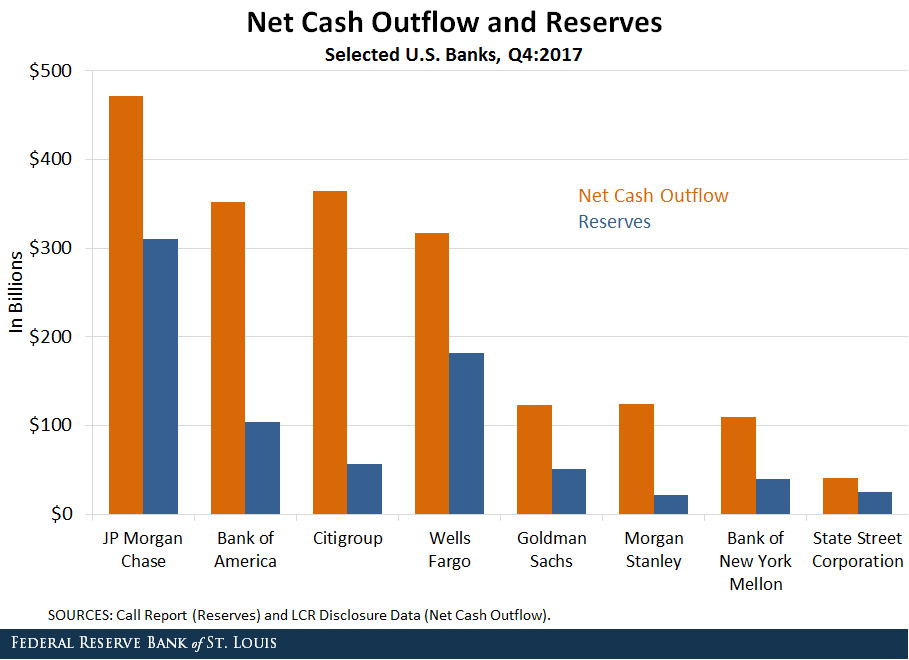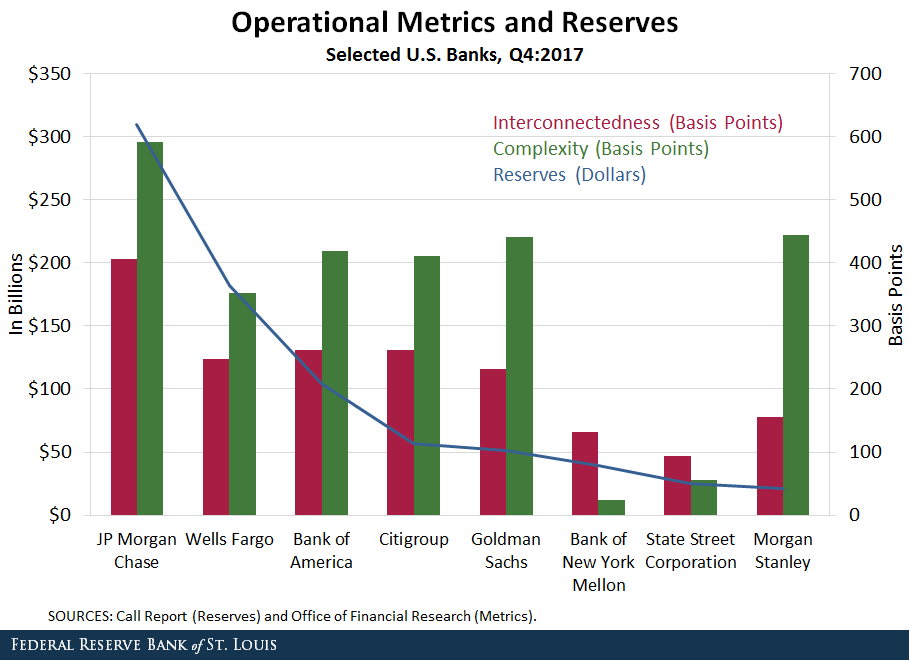Banks' Demand for Reserves in the Face of Liquidity Regulations

The Federal Open Market Committee (FOMC) has stated that it would like to operate monetary policy in the longer run with an ample supply of reserves in the banking system. In recent weeks, market participants have been mentioning estimates of the level of ample reserves to be in a range of $1 trillion to $1.4 trillion, much larger than the precrisis level of less than $20 billion. This eye-popping increase in the projected level of reserves needed to implement monetary policy reflects, in large part, banks’ increased demand for reserves resulting from new liquidity regulations.
Liquidity Regulations
What are these liquidity regulations that are boosting demand for reserves? Postcrisis, large bank holding companies face a variety of regulations aimed at having these banks hold high-quality liquid assets (HQLA), which include reserve balances held at the Federal Reserve.
Two regulations often cited in earning calls or surveys as to driving banks’ demand for cash-like assets are the liquidity coverage ratio (LCR) and resolution plans. This post provides a short synopsis of the regulations and looks at how, in the current economic environment, the largest U.S. banks’ reserve holdings are correlated with factors associated with these regulations.
Liquidity Coverage Ratio
The LCR creates a standardized minimum daily liquidity requirement for large and internationally active banking organizations.See “Basel III: The Liquidity Coverage Ratio and liquidity risk monitoring tools” for a detailed discussion of the LCR. The LCR is a formula-based metric of liquidity that requires a bank’s HQLA to be larger than its projected net cash outflows over a 30-day stress period.
The net cash outflow is a calculation of how much of the bank’s short-term borrowing may not be rolled over as well as how many short-term deposits might flee. Banks publically disclose details of their LCR calculations quarterly.
Though reserves are not the only HQLA that can be used by banks to meet the LCR, as seen in the figure below, large U.S. banks are using reserves to cover 20 to 65 percent of their net outflows.

Resolution Plans
Resolution plans, also known as living wills, are devised to ensure large banks can rapidly and orderly resolve in the event of material financial distress. See the Resolution Plan Assessment Framework and Firm Determinations (2016) for background, objectives and assessment of resolution planning. Part of resolution is ensuring banks have enough short-term liquidity to cover demands from stakeholders and counterparties during such an event.
Banks demonstrate sufficient liquidity to regulators by reporting the results of internal liquidity stress tests. These internal tests are not released to the public, but one can imagine that the more financially interconnected or structurally complex a bank is, the more HQLA it holds.
As with the LCR, reserves are not required to be held to meet short-term liquidity needs. That said, as shown in the figure below, several large U.S. banks are holding sizable reserves, and their holdings are highly correlated with measures of financial interconnectedness and business model complexity.

What Are Banks Saying?
In September, the Fed surveyed 51 banks and asked them to rank factors that affect the amount of reserves they need. These banks reported regulatory factors as important or very important in their decisions about the level of reserves they would be comfortable holding.
| Factor Affecting Demand for Reserves | Share of Respondents Rating Important or Very Important |
|---|---|
| Internal Liquid Stress Metrics | 68% |
| Intraday Payment Flows | 60% |
| Deposit Outflows | 58% |
| Reserve Requirements | 47% |
| High-Quality Liquid Assets | 37% |
| Earn Interest on Reserves | 16% |
| NOTE: Bolded factors are associated with liquidity regulations. | |
| SOURCE: Senior Financial Officer Survey, September 2018. | |
Going forward, the FOMC will be determining the “ample” level of reserves it wants in the banking system to implement monetary policy effectively and efficiently. This determination will reflect, in part, the influence of liquidity regulations on banks’ demand for reserves.
Notes and References
1 See “Basel III: The Liquidity Coverage Ratio and liquidity risk monitoring tools” for a detailed discussion of the LCR.
2 See the Resolution Plan Assessment Framework and Firm Determinations (2016) for background, objectives and assessment of resolution planning.
Additional Resources
- On the Economy: Why Are Banks Regulated?
- On the Economy: Bank Supervision and the Central Bank: An Integrated Mission
- On the Economy: Congress Passes New Banking Legislation to Reduce Regulatory Burden
Citation
ldquoBanks' Demand for Reserves in the Face of Liquidity Regulations,rdquo St. Louis Fed On the Economy, March 5, 2019.
This blog offers commentary, analysis and data from our economists and experts. Views expressed are not necessarily those of the St. Louis Fed or Federal Reserve System.
Email Us
All other blog-related questions

